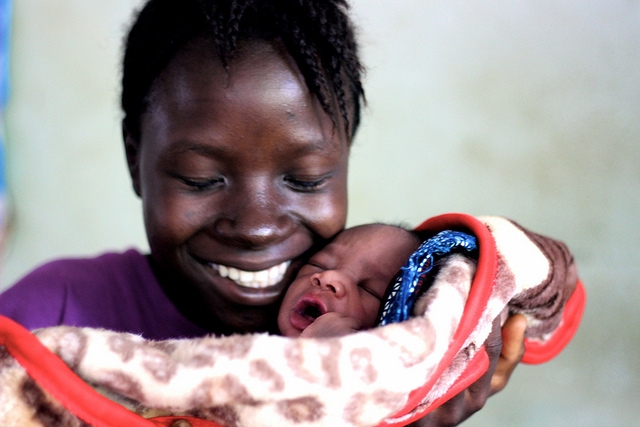Elsevier, Journal of Aging Studies, Volume 31, August 08, 2014
Purpose of the study: The process of involving older clients with regard to their care arrangements has been the subject of previous studies. However, a more general overview of the issues addressed by older people living in long-term care (LTC) facilities, in order to inform practice improvements, is missing. This article explores which aspects of care that older people in LTC facilities want to improve, by means of a collective policy agenda-setting project, during which the participants voice their own experiences and concerns regarding LTC.
Elsevier, Computers and Chemical Engineering, Volume 66, 4 July 2014
This article describes the key challenges and opportunities in modeling and optimization of biomass-to-bioenergy supply chains. It reviews the major energy pathways from terrestrial and aquatic biomass to bioenergy/biofuel products as well as power and heat with an emphasis on "drop-in" liquid hydrocarbon fuels. Key components of the bioenergy supply chains are then presented, along with a comprehensive overview and classification of the existing contributions on biofuel/bioenergy supply chain optimization.
Elsevier,
Energy, Volume 68, 15 April 2014
This paper defines the concept of 4th Generation District Heating (4GDH) including the relations to District Cooling and the concepts of smart energy and smart thermal grids. The motive is to identify the future challenges of reaching a future renewable non-fossil heat supply as part of the implementation of overall sustainable energy systems.
Elsevier, The Lancet Global Health, Volume 2, 2014
Background: A third of the 2·5 billion people worldwide without access to improved sanitation live in India, as do two-thirds of the 1·1 billion practising open defecation and a quarter of the 1·5 million who die annually from diarrhoeal diseases. We aimed to assess the eff ectiveness of a rural sanitation intervention, within the context of the Government of India's Total Sanitation Campaign, to prevent diarrhoea, soil-transmitted helminth infection, and child malnutrition.
Elsevier, Journal of Criminal Justice, Volume 42, July 2014
Purpose: History shows that one of the most important institutions to a society is its criminal justice system. The current study offers an analysis of the criminal justice system's effectiveness in identifying, apprehending, convicting, and punishing high-level/persistent offenders. Methods: Data were drawn from all four waves of the Add Health study. Survey-corrected univariate statistics and logistic regression models were estimated to provide population parameter estimates of the frequency of arrest and punishment for a group of persistent offenders compared to non-persistent offenders.
Elsevier, Energy Research and Social Science, Volume 1, March 2014
Energy is central to the survival and prosperity of human society, which explains the social sciences' interest in energy production, consumption and distribution. The emergence of the global environmental agenda in the second half of the 20th century gave rise to a distinctive research literature on how energy systems and global environmental protection are interconnected. The threat of disruptive climate change, in particular, has thrown the spotlight on the central role that energy plays in shaping the future relationship between human society and its natural environment.
Elsevier, Diabetes Research and Clinical Practice, Volume 103, February 2014
Introduction: Diabetes is a serious and increasing global health burden and estimates of prevalence are essential for appropriate allocation of resources and monitoring of trends. Methods: We conducted a literature search of studies reporting the age-specific prevalence for diabetes and used the Analytic Hierarchy Process to systematically select studies to generate estimates for 219 countries and territories. Estimates for countries without available source data were modelled from pooled estimates of countries that were similar in regard to geography, ethnicity, and economic development.
Elsevier, Current Opinion in Environmental Sustainability, Volume 8, June 2014
Sub-Saharan Africa needs to produce more food, feed, and fiber to support its growing population and intensification of smallholder agriculture is a crucial component of any strategy towards this goal. Sustainable Intensification (SI) acknowledges that enhanced productivity needs to go hand in hand with the maintenance of other ecosystem services and enhanced resilience to shocks. A very diverse group of smallholders dominate SSA agriculture, with large heterogeneity in socio-technical conditions, famer typologies, production objectives, and the biophysical environment.
Elsevier, The Lancet, Volume 383, 2014
A new Global Investment Framework for Women's and Children's Health demonstrates how investment in women's and children's health will secure high health, social, and economic returns. We costed health systems strengthening and six investment packages for: maternal and newborn health, child health, immunisation, family planning, HIV/AIDS, and malaria. Nutrition is a cross-cutting theme. We then used simulation modelling to estimate the health and socioeconomic returns of these investments.

